WE RIDE PRO CIRCUIT’S HOT-ROD SUZUKI RM-Z250
The 2019–2020 RM-Z250 is a tough sell. Let’s be honest, it doesn’t have a lot to offer a racer in the man-and-machine relationship. It is out of shape and fat. It doesn’t have the legs to keep up with the competition. Although, it does do one thing well—turn. It turns inside any bike on the track, although that great turning prowess comes at the cost of straight-line stability. MXA had Pro Circuit build us a 2020 Suzuki RM-Z250 with some muscle to give Suzuki loyalists a prayer of keeping up with the competition. The good thing? It was possible. The bad thing? It wasn’t cheap.
MXA HAD PRO CIRCUIT BUILD US A 2020 SUZUKI RM-Z250 WITH SOME MUSCLE TO GIVE SUZUKI LOYALISTS A PRAYER OF KEEPING
UP WITH THE COMPETITION.
In stock trim, the 2020 RM-Z250 pumps out a lackluster 39.23 horsepower and 19.45 pound-feet of torque. To be in competition with the top power producer in the 250 four-stroke class (the KTM 250SXF), the sluggish RM-Z250 powerplant would have to gain more than 4 horsepower. That is more than a 10-percent power gap. When Pro Circuit went to work on the RM-Z250, they tried to keep the cost below $5000 but admitted they could get more power for more money and a shorter time between overhaul. The $5000 price tag may sound like a lot of money, but a full-blown AMA Pro race engine usually runs in the $8000 range, and that is without any bells and whistles such as an exhaust. So what did Pro Circuit produce for five grand? More than we bargained far.
On the dyno, the Pro Circuit RM-Z250 engine pumped out a 15-percent increase in horsepower. On paper, that is a 5-percent increase in pony power over the RM-Z250’s stiffest competition. That is not all. Torque was also increased by 13 percent, which is 8 percent better than the best in class (the 2019 KX250). We were excited when we saw the dyno chart; however, we had to calm down and remind ourselves that we were comparing a Pro Circuit-built engine that we just spent $5000 on to stock machinery.
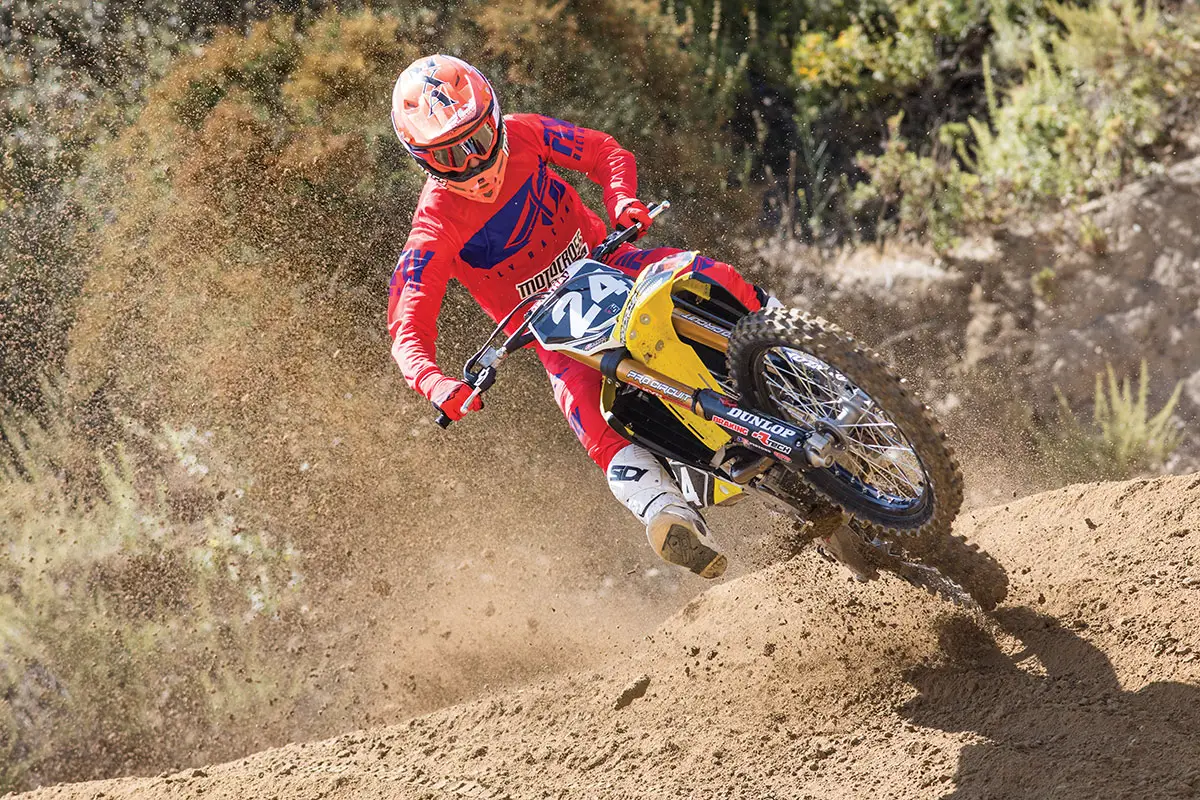
TRACK TESTING THE HOT-ROD RM-Z
When riding through the pits to the track, the MXA test riders could feel the increase in liveliness of the engine and the quicker throttle response just by blipping the throttle. On the track, the engine made its way through the revs at a rapid rate—so rapid that it caught many of our testers off guard. What do we mean? The hopped-up RM-Z250 engine was so willing to rev that it blew right by the signal to shift. The engine was deceiving. It felt like you had to rev the engine to the moon to get the most out of it. But, when test riders did this, the power fell flat and had no gusto to pull hard in the next tallest gear. The engine had a super powerful sweet spot, but unlike with most 250 four-stroke engines, we quickly learned to short-shift it to hit it. The shift points with the RM-Z250 engine were critical. Shifting too soon or too late would bog down the engine, regardless of its KTM-like horsepower.
WHEN RIDING THROUGH THE PITS TO THE TRACK, THE MXA TEST RIDERS COULD FEEL THE INCREASE IN LIVELINESS OF THE ENGINE AND THE QUICKER THROTTLE RESPONSE JUST BY BLIPPING THE THROTTLE.
We sent two test riders out on the track to experiment with shift points. They switched back and forth, taking turns going straight up Glen Helen’s massive Mount Saint Helen uphill, which was the best place to put a big load on the powerplant. Once the test riders grew comfortable with the bike and learned how to ride it to its fullest, they were in awe of the power. The extremely torquey bottom end and smooth-but-powerful midrange made the power transition from bottom to mid incredible. It wasn’t jerky or high-strung like most modified 250 engines. We could pull a higher gear than stock in most corners, and we didn’t have to bother with flapping away at the clutch to get up to speed out of a corner. This made a good-turning bike even better for our testers, as they could easily roll on the power to magnify the inside lines that the Suzuki RM-Z250 loved.
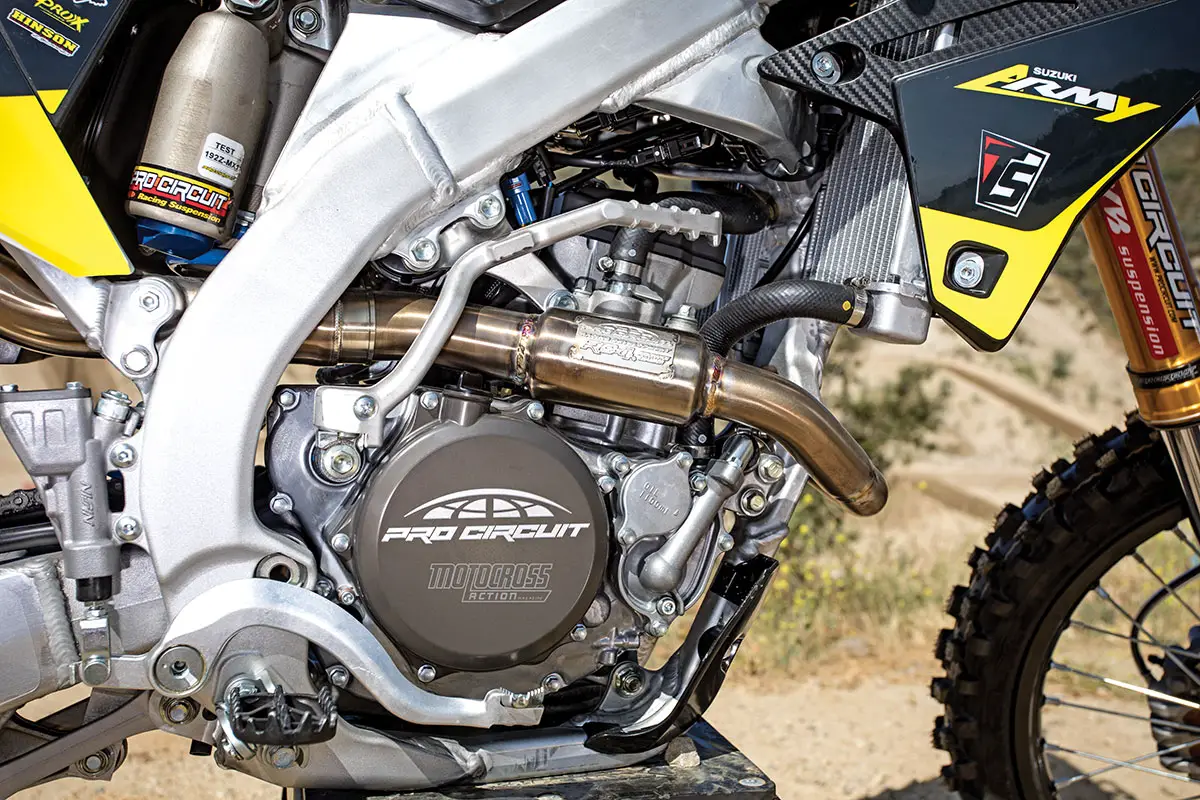
When we switched from Pro test riders to Vet test riders, they loved this package. They gushed that it wasn’t a high-strung race engine that had to be ridden at a blistering 14,000 rpm to get the most out of it. They could hit it and quit it, and still get the RM-Z250 up to competitive speeds. We rode the Pro Circuit-tuned RM-Z250 more like a 450 four-stroke than a 250. Test riders reveled in the fact that they could roll on the throttle and short-shift their way through the whopping 45.51 horsepower and 22.40 pound-feet of torque that the $5000 bought.
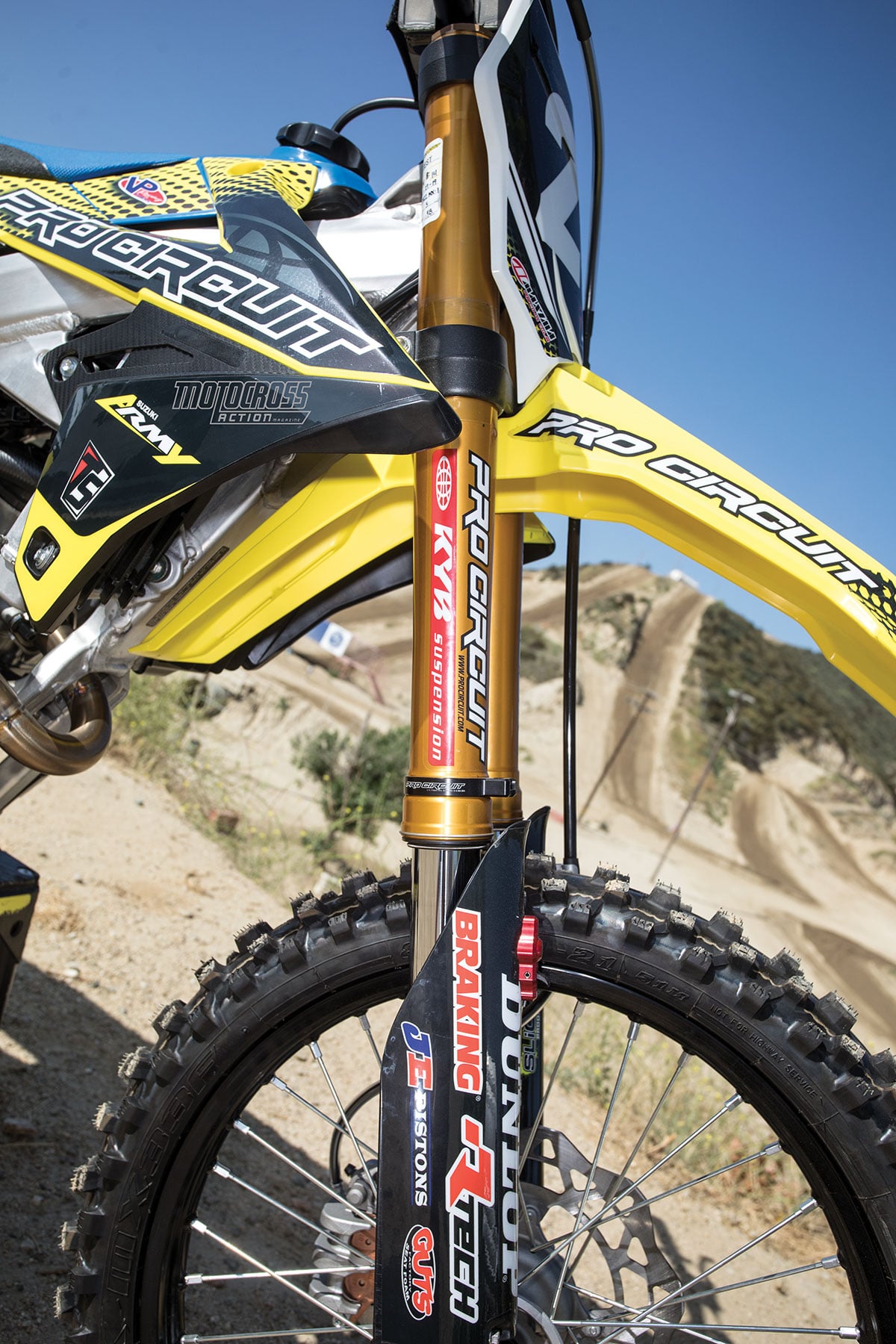
WHAT DO WE REALLY THINK?
Every Suzuki loyalist would love the Pro Circuit RM-Z250 powerplant. It was better at every step of the rpm range. Our Pro riders, who are in the habit of resisting shifting in order to try to squeeze the most out of a 250 powerplant, had to get used to riding with less effort. The conundrum with a hopped-up Suzuki RM-Z250 is that the five grand only brought us up to where the KTM and Husqvarna are in stock trim. We can’t ignore the fact that if we spent $5000 on a bike that starts 5 horses higher than the Suzuki, it would be no contest. This bike was made for diehard Suzuki riders to prove that the RM-Z250’s flabby fat could be tuned into lean muscle. For more information about Pro Circuit’s hot-rod Suzuki RM-Z250, go to www.procircuit.com or call (951) 738-8050.


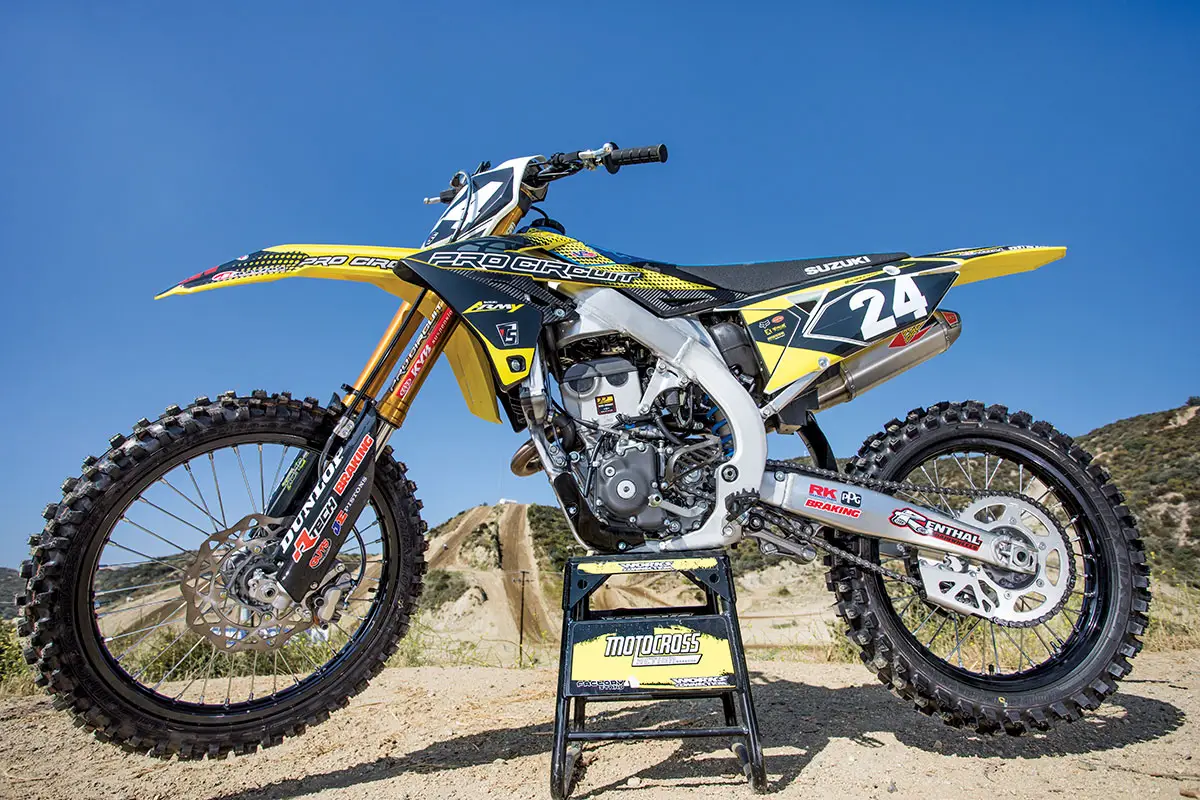
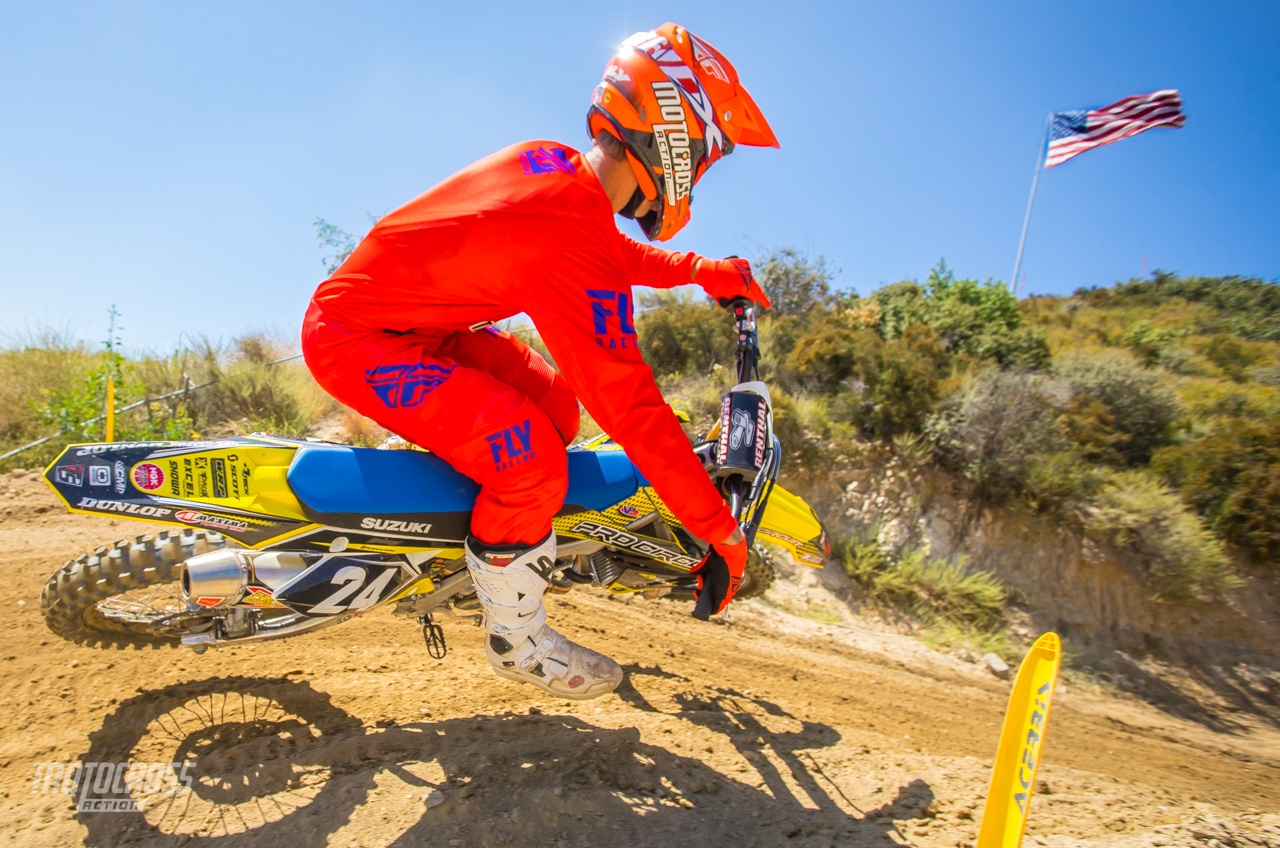


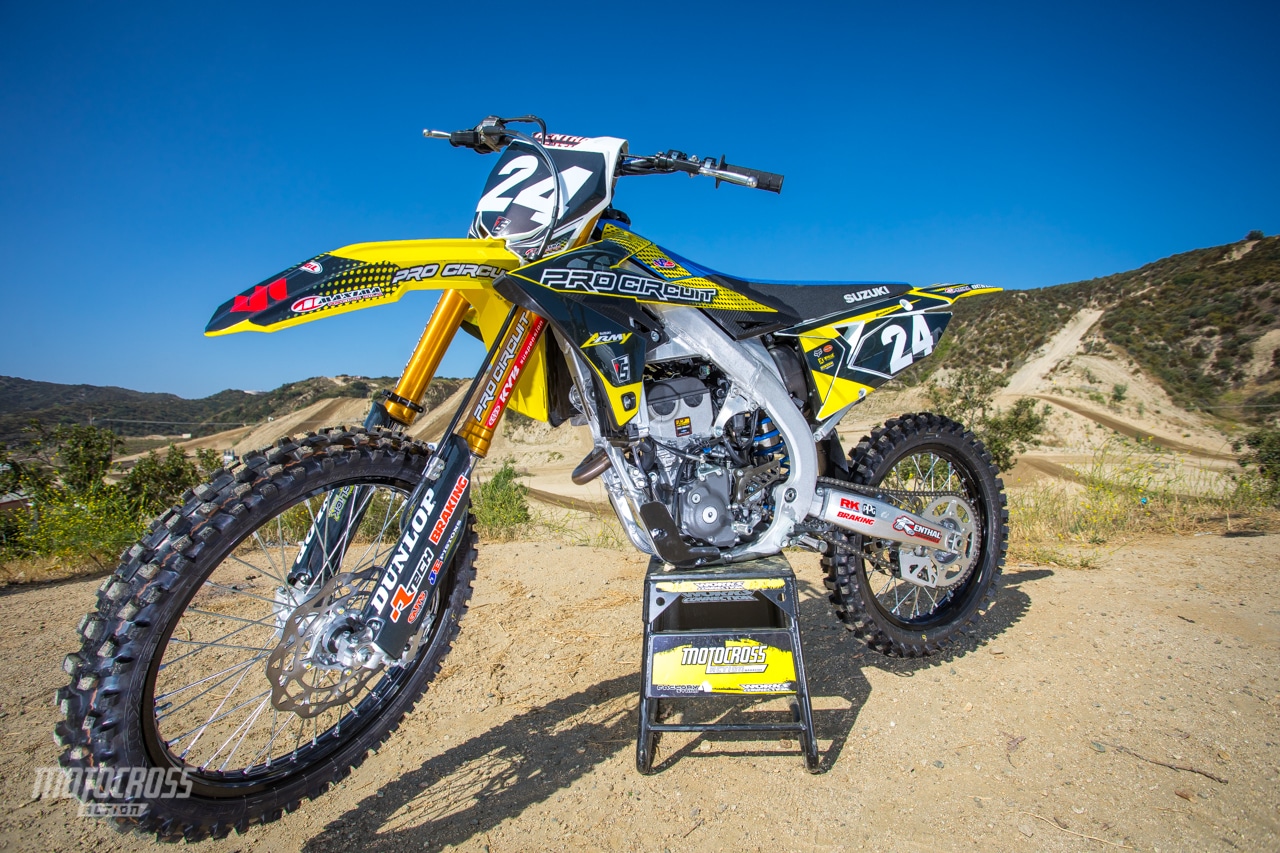


Comments are closed.